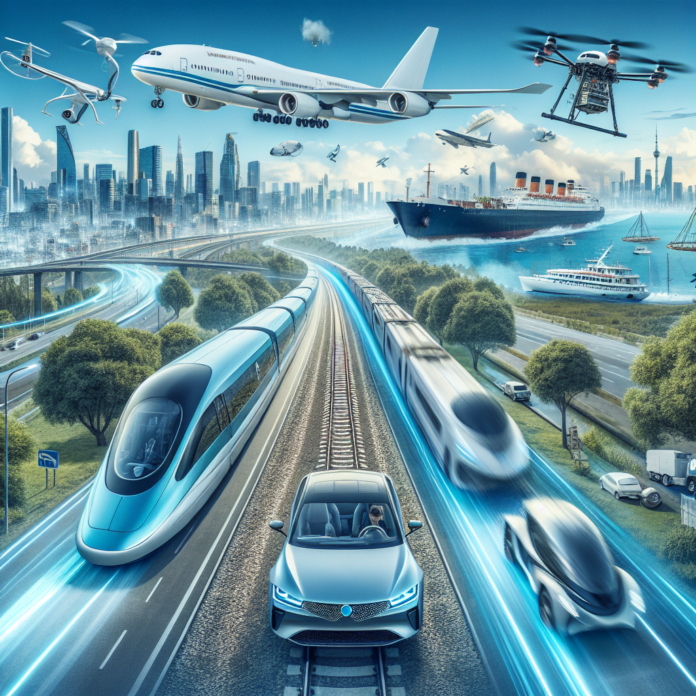Modern transportation has experienced vast diversification, especially during the past few decades. The necessity for efficient, flexible, and diverse transportation options has driven innovation producing options to suit all kinds of purposes and needs. Whether it is commuting for work, exploring a new city while on vacation, or delivering goods across continents, there’s a transportation solution available.
Public Transportation
Most cities worldwide offer public transportation systems, and they can be broadly divided into buses, trains, trams, and subways. Public transportation is important because it provides an inexpensive way for people to travel from one location to another. These systems are especially helpful to individuals who do not own a personal car and for those who prefer to avoid the stress and cost of driving and parking in a city.
Private Cars
Despite the push towards shared transport, cars still prevail as the most popular mode of transport worldwide. Technological improvements have made cars more efficient, safe, and comfortable. From a budget-conscious mini-car to a luxury SUV, the selection diversity can suit any taste and budget.
ride-hailing apps
Ride-hailing platforms such as Uber and Lyft have revolutionized the way we see taxi services. With the help of an app, you can quickly find a ride in your vicinity, get a price quote, take the ride, and pay seamlessly. The success of these platforms lies in their convenience, cost-effectiveness and operational efficiency.
Bikes and Scooters
More recently, with a drive towards green and active transport, bike and scooter sharing systems like Lime and Bird have flooded city streets. These dock-less vehicles can be rented using an app and can be picked up and dropped off anywhere, making them a convenient option for short trips.
Car-sharing and Carpooling
Another trending mode of transportation calls for sharing a ride with others or co-owning vehicles. Car-sharing services like Zipcar allow people to rent cars on an hourly basis, thus liberating them from the costs and responsibilities of owning a car. On the other hand, carpooling services like BlaBlaCar connect drivers traveling from one city to another with passengers willing to share the journey and the costs.
Rail and Air Travel
For intercity and international travel, rail and air travel lead the pack. Trains offer a greener alternative to planes, which are faster but have a significant carbon footprint. High-speed trains that provide speed and efficiency are becoming more common. At the same time, airlines strive to make air travel as comfortable and efficient as possible, with services ranging from budget to luxury.
Electric and Autonomous Vehicles
The Transport sector isn’t immune to the ongoing digital transformation. The Future promises more technological advancements such as electric and autonomous vehicles. Electric cars, led by pioneers like Tesla, are building a path to a more sustainable future by running on electricity instead of gasoline. Autonomous or self-driving cars, although in a nascent stage, possess the potential to revolutionise the way we perceive and utilize road transport.
Conclusion
The landscape of modern transportation is vast and varied, from conventional means like public transport and private cars, to innovative solutions like ride-hailing platforms, bike-sharing systems, and autonomous vehicles. Regardless of the method of transport chosen, the goal remains clear: to reduce commuting stress and provide efficient, economical, and eco-friendly ways of getting us from one point to another. As technology continues to evolve, the future of transport looks bright, promising safer, cleaner, and more efficient travel modes.
FAQs
1. What is the most efficient mode of transportation?
Efficiency varies depending upon the measurement criteria. Bikes are highly energy-efficient for short distances; trains are extremely efficient for medium to long-range transportation; airplanes are time-efficient for long distances.
2. What role does technology play in transportation?
Technology significantly impacts transportation by enhancing safety, efficiency and convenience, reducing costs, and offering more environmentally friendly solutions. From GPS-tracking and ticket-booking apps to autonomous and electric vehicles, technology is continuously revolutionising the way we travel.
3. How are ride-hailing apps like Uber and Lyft changing transportation?
Ride-hailing services offer on-demand, convenient, and often cheaper alternatives to traditional taxis. They are particularly popular among urban dwellers who lack personal vehicles. These services have not only transformed the taxi industry but also impacted public transportation and vehicle ownership trends.

